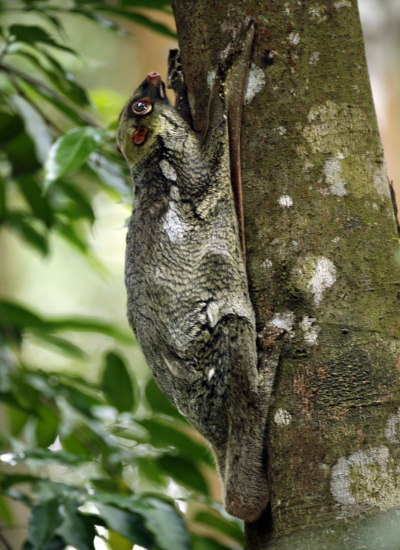The food industry is a key sector for the deep changes required by the society in order to fulfill the SDGs by 2030. The agricultural sector plays a fundamental role in facing the World’s challenges linked with climate change, biodiversity loss, food scarcity and growing population. Representing some 500 Million, or 88% of the 570 Million farms globally, family generates about 80% of the Earth’s food.
GUNUNG MACHINCHANG FOREST RESERVE AREA
Black-hooded Oriole & Black-naped Oriole
From the forest edge to mangroves, these omnivorous birds are found all over Langkawi. The oriole has a clear and almost fluty song, with a distinctive undulating flight. The black-hooded oriole is considered an endemic species in Langkawi.
example….
Asian Fairy-bluebird
This dual-tone blue-coloured bird eats fruits, nectar and occasionally insects. Flying in pairs, these birds exhibit sexual dimorphism, where the male species is much bolder in colour.
CHENANG AREA
Blue-tailed Bee Eater & Bee Eater, Chestnut-headed
These insectivorous birds are elegant flyers with elongated tail feathers. They build their burrows into sandy banks.
Chinese Pond-heron
Found almost everywhere in Langkawi, the Chinese pond-heron are distinctive when displaying their breeding colours. They are carnivorous birds that often nest with members of the same family.
Greater Coucal
This is a crow-sized bird that spends much of its time walking while foraging in the undergrowth. They emit a loud booming call.
GUNUNG RAYA RAINFOREST RESERVE AREA
Great Hornbill, Oriental Pied Hornbill & Wreathed Hornbill
Of the ten species of hornbills residing in Malaysia, these three species are the only ones found in Langkawi. They measure up to 1.2m from tip to tail. Gregarious and loud, these are indeed a sight to behold when flying.
Crested Serpent-eagle
With a distinctive bare yellow face, this raptor is often found perched in trees. On rare occasions, they can be observed gliding on broad, paddle-like wings searching for prey, including snakes.
Peregrine Falcon
One of the fastest birds in Langkawi, these raptors feed on insects, birds, small mammals and reptiles. They are shy and very difficult to photograph.
KILIM KARST AREA
Brahminy Kite
The symbol of Langkawi, these birds can be found almost everywhere on the island. Their head, neck and breast are white with dianostic black feather shafts. The juveniles are brown with white mottling. These birds can be found along the coast and near inland bodies of water.
White-bellied Sea-eagle
Having a wingspan of two metres, this bird has a loud honking call that can be heard one kilometre away. Dark brown when young, they gradually turn grey on top and white on the belly.
Common Kingfisher, Collared Kingfisher, Brown-winged Kingfisher & White-throated Kingfisher
These colourful, cavity-nesting birds are found throughout the island. They will eat anything from small fish and crabs to worms. Their raucous laughing call can often be heard in the mangroves.

Brown-winged Kingfisher
Photo by Selvaganesh17

Brahminy Kite
PULAU DAYANG BUNTING AREA
House Swallow & Barn Swallow
Spread throughout the island, these small birds are insectivorous and use sheltered corners of buildings as a nesting area. The house swallow will also use caves, often sharing the space with bats.
Paddyfield Pipit
An insectivorous bird, the paddyfield pipit is usually found walking on open ground looking for food amongst the grass. Occasionally, they can be seen in gardens poking beneath the grass.
Brown Shrike & Tiger Shrike
Migratory and solitary, these birds prey on insects, birds and reptiles. If the prey is too large to be finished in one meal, the bird will impale it on a thorn and return to it later.
PRIMATES
Crab-eating Macaque or Long-tailed Macaque
Despite their name, crab-eating macaques do not consume crabs! Instead, they prey on vertebrates and plants. These monkeys are ecologically diverse and can be spotted in coastal lowland forests as well as swamp forests. A clear dominance hierarchy is seen among females, with male members leaving the group at the time of puberty.
Dusky Leaf Langur or Spectacled Langur
These sleepy creatures are easily recognised by the white rings around their eyes, creating the appearance of spectacles and a constant startled expression. Dark grey in colour, langurs breed orange babies, making them a difficult target for colour blind predators. These monkeys are mostly active during the day and live high up in the trees. However, in the evenings, they may come to ground level in forest clearings to feed on tender leaf shoots.
Flying Lemur or Colugo
Flying lemurs are not technically lemurs and do not fly. Instead, they glide as they leap among trees. Feeding on fruits and flowers, these animals are nocturnal, strictly arboreal, and live either solitary or in small groups. They are skillful climbers, but are helpless when on the ground. The only other species of flying lemurs can be found in the Philippines.
Slow Loris
Slow lorises are nocturnal animals that have large eyes, with arms and legs in equal length, giving them a pincer-like grip. Their long and flexible trunk allows them to twist and extend to nearby branches. This omnivorous animal moves slowly and deliberately makes little or no noise. When threatened, they stop moving and remain motionless.

















